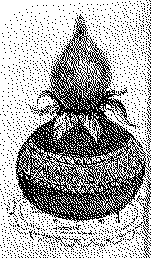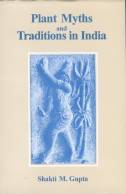![]()
![]()
![]()
![]()
![]()


I was fortunate to
have been brought up in a UK rural area and have an inkling about some
superstitions and plant lore existing in my own land. But this would seem to
pale against the elaborate myths and tales associated with specific Indian
plants and trees. The introduction to the book – some 10 pages – is an
education, covering why some plants are considered sacred, and which are
considered auspicious to use in religious ceremonies or to burn in the sacred
fire ceremony. Facts abound in the text, for example covering the use of leaves
of the Neem tree in feasting following the death of certain tribe members in
Orissa, or a fascinating sequence concerning the practices and reasons why the
marriage of boys and girls to trees is carried out ( apparently still practised
by certain tribes in India). Yet still it is interesting to understand that
deities find all gum-oleoresins agreeable except Boswellia serrata.

The next 91 pages
covers myths, stories and beliefs associated with forty-five plants and trees,
of which several will be familiar to the layman, for example Holy basil Ocimum
sanctum, Tamarind Tamarindus indica,
Mango and the Lotus Nelumbo nucifera. I was especially taken with the story of the discourse
between Siva and the betel vine Piper
betel in Heaven in the days when plants could talk like humans, and the
outcome when the vine took its place on earth. The research which has unearthed
these associations is a credit to Dr. Sakti Gupta who is, the liner notes inform
us, an established writer in Hindu mythology, and has published a large number
of books.

The book comes with 2
appendices, one of which is a useful glossary of mythical and historical
characters in religious contexts. The book is completed with 28 black and white
plates many of them depicting plants as found in carvings on temple walls, this
section pleasingly illustrating craftsmanship and style that makes you want to
reach out and touch and feel the textures of the carved stone.

I’m
not sure if aspects of social anthropology or socio-biology are the right terms in which to
describe these studies, all I know is this is a fascinating book if you are
deeply into plants and people.
BACK BACK TO BOOK REVIEWS NEXT
![]()
![]()
![]()
![]()
![]()